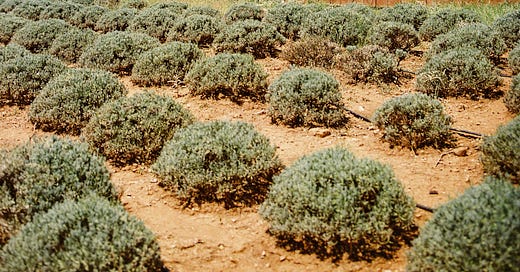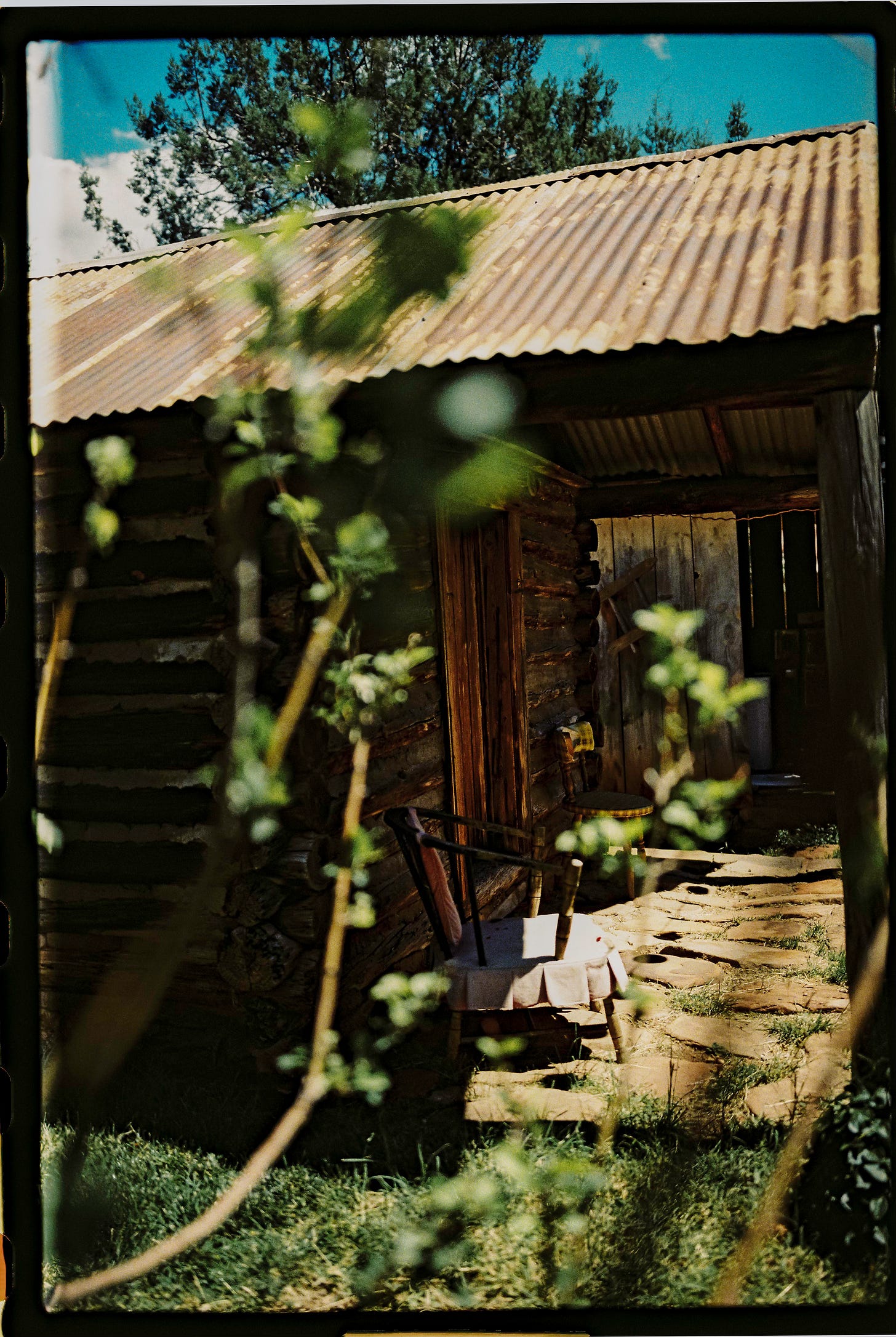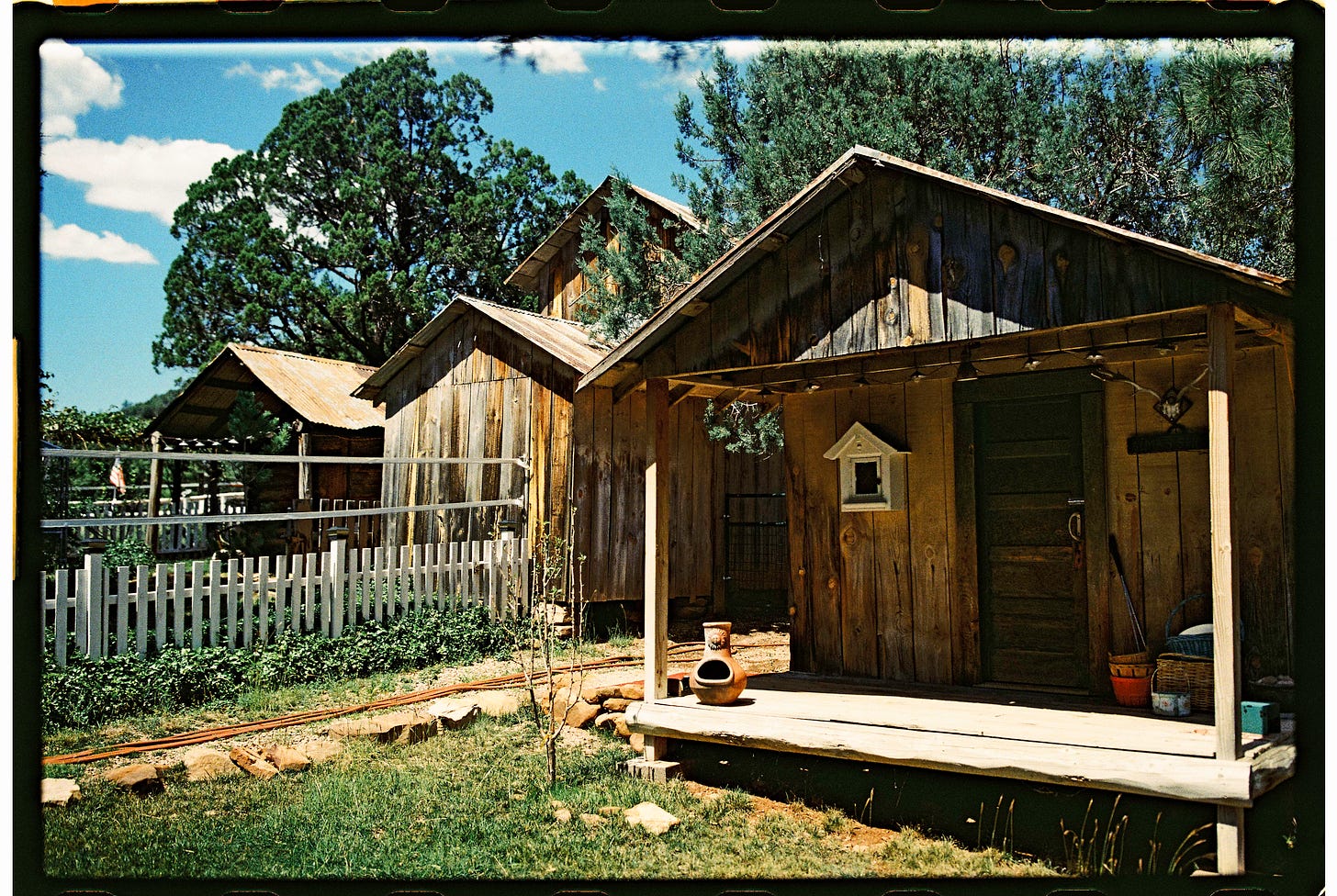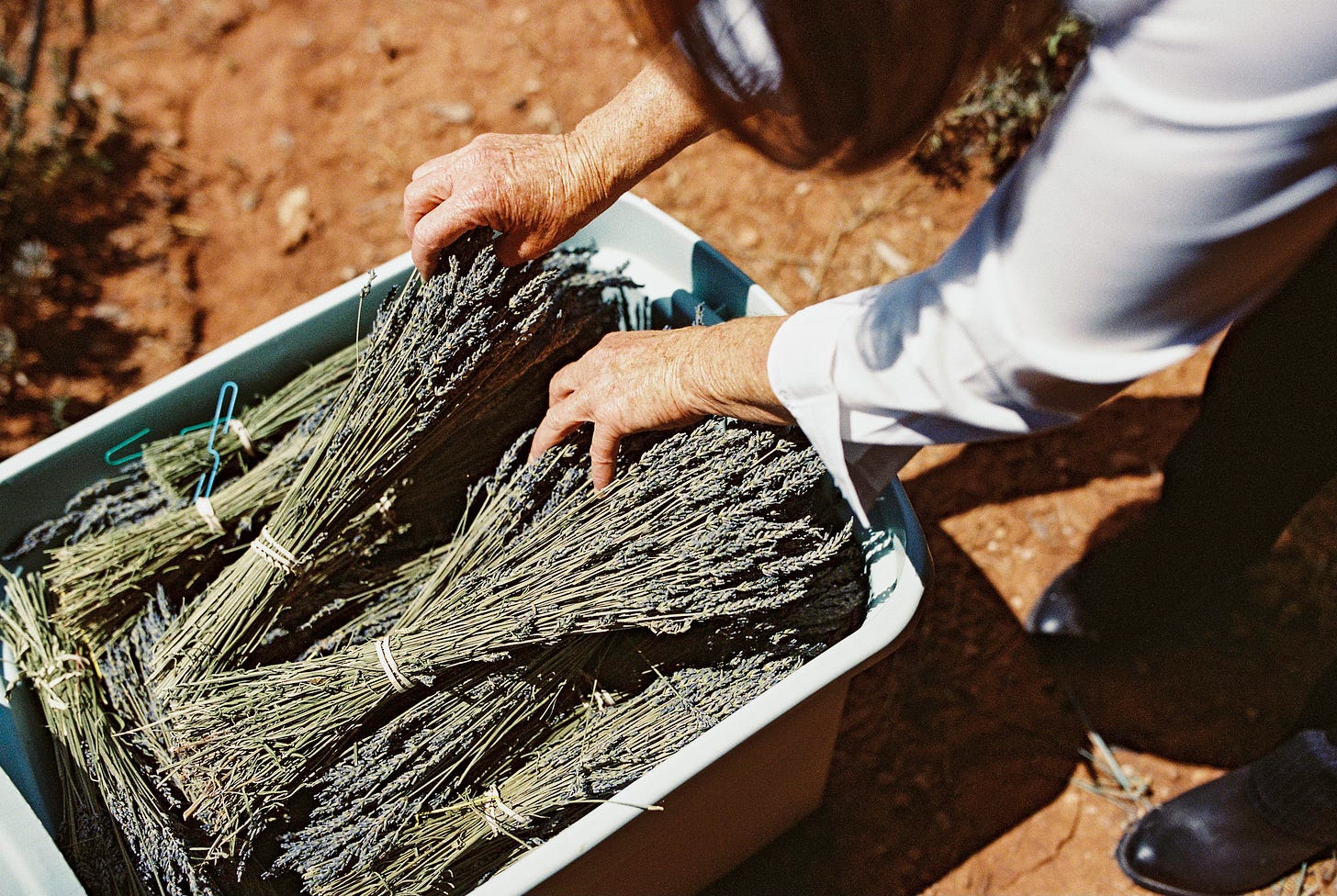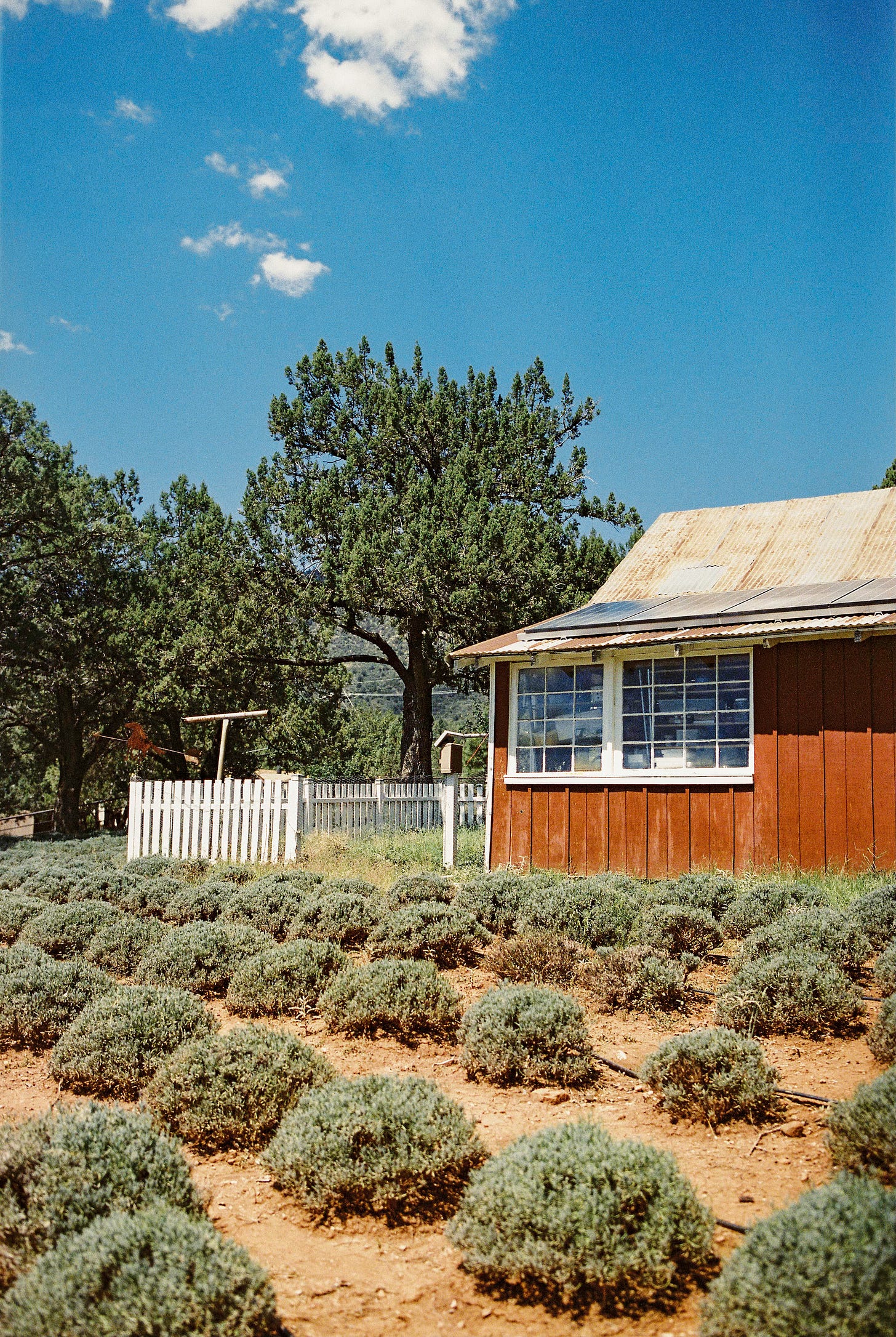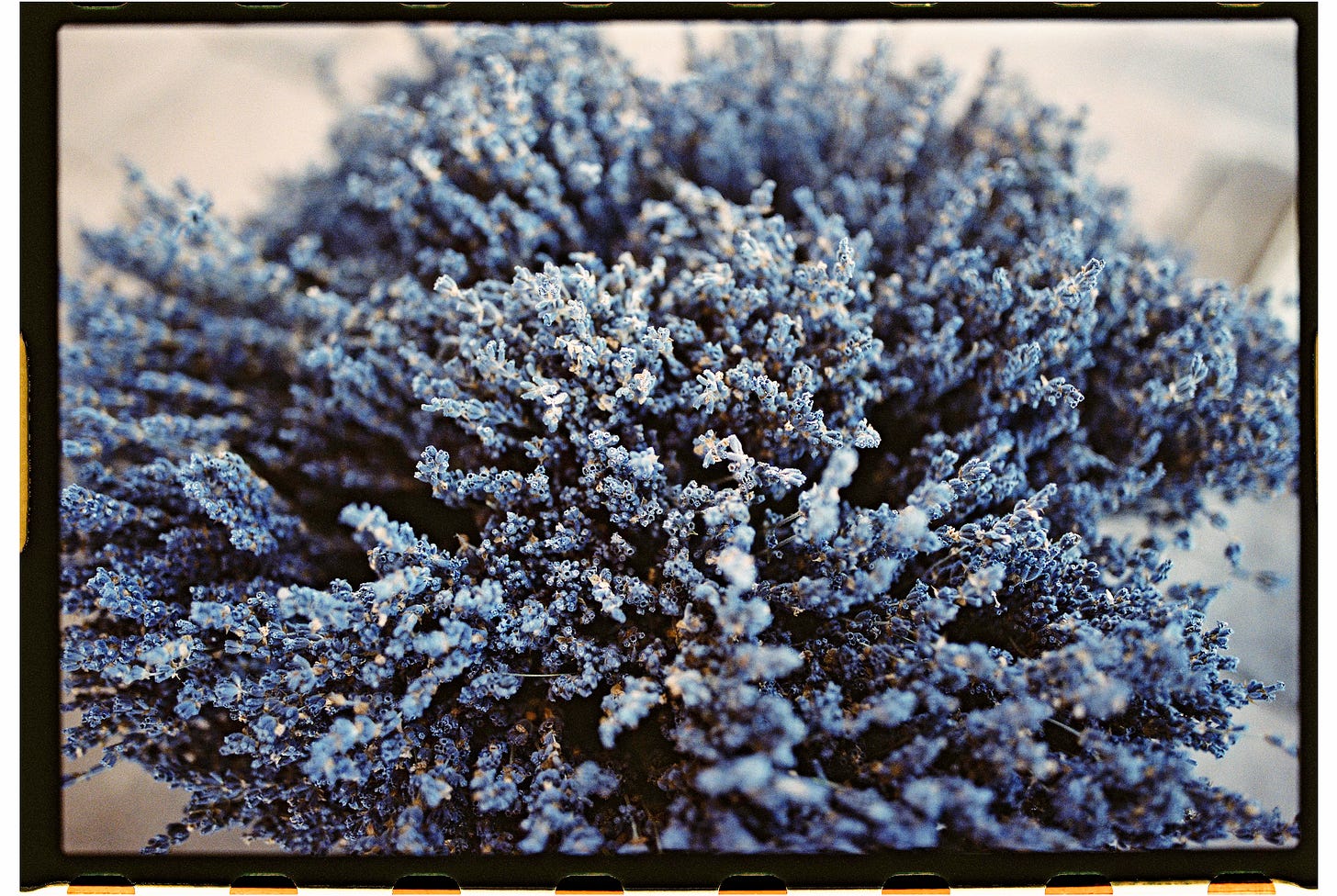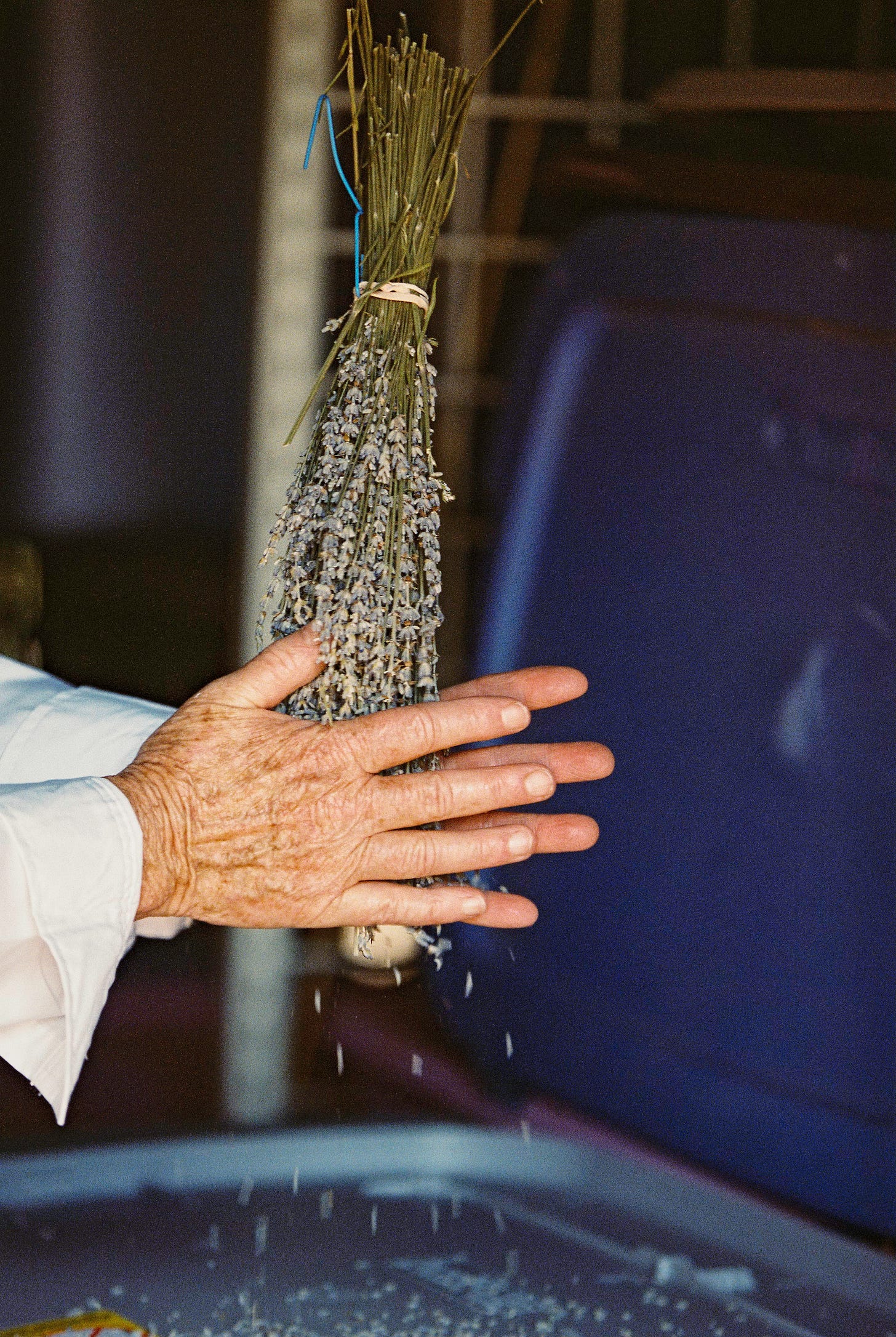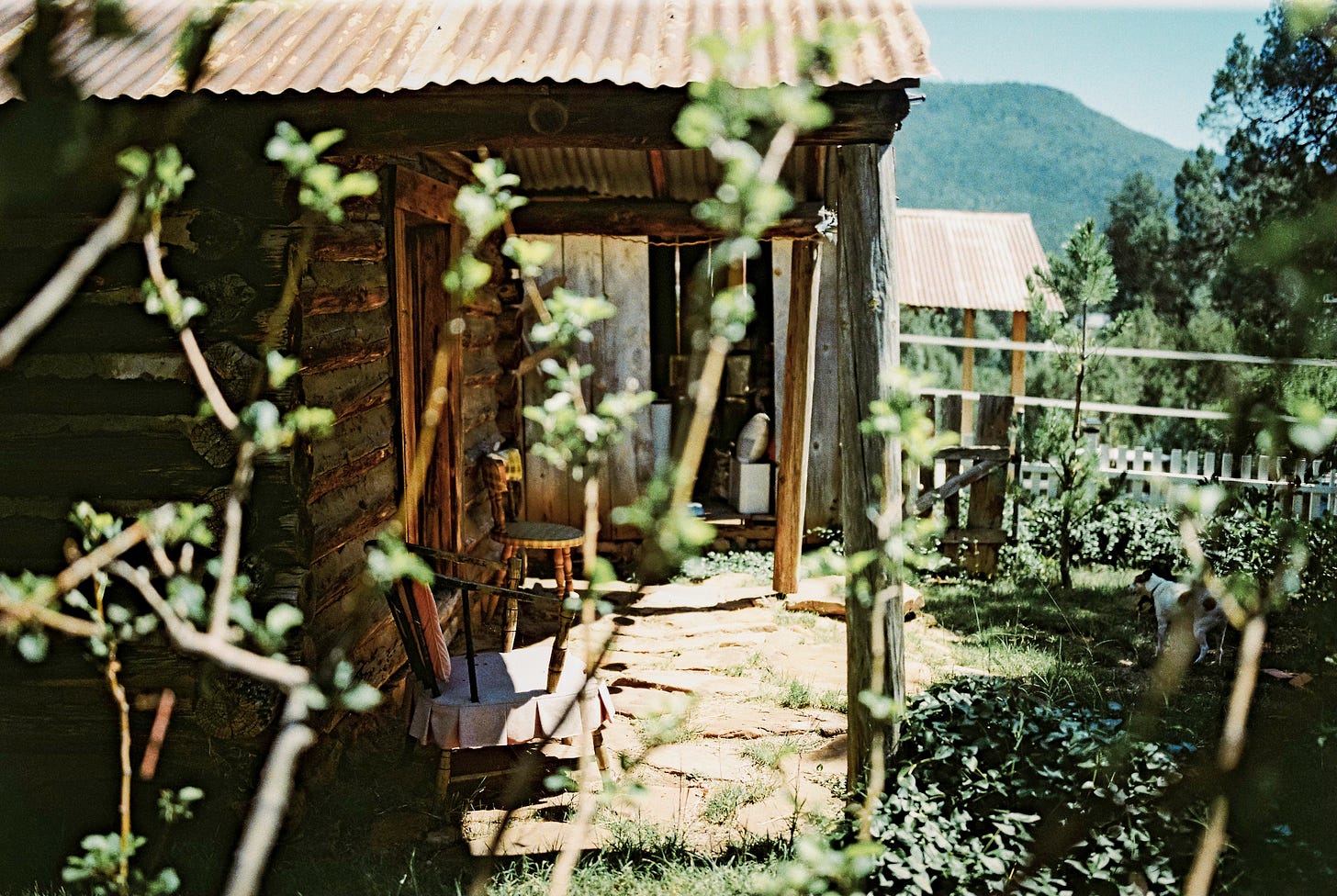How a Historic Farm Became Arizona's Lavender Heaven
From cattle to lavender in an unlikely town — this might be Arizona’s best-kept secret.
Nestled among the pines off a winding Arizona highway lies a historic landmark brimming with lavender, paw prints, and a family's unwavering dedication to preservation.
In the early 1880s, Almay Moroni and Rosetta Hunt journeyed south from Salt Lake City, intending to settle in Mesa, Arizona. Instead, they were captivated by a hand-built home on several acres in Pine, where the emerald mountains echoed Rosetta's Italian homeland. Drawn by the land's promise, they settled to farm corn and raise cattle, unaware they were planting the seeds of a lasting legacy.
Earlier this month, seeking respite from the heat, Reyce and I took Reyna up north. We packed canned drinks and plenty of fruit for the short two-hour drive, winding along the serpentine road up the Mogollon Rim to the farm. A few weeks prior, I noticed this place gaining traction on Instagram and learned that my friends at Cloth and Flame had hosted a lavender faire dinner on their grounds. As a family of avid gardeners, we felt compelled to visit.
Upon arrival, we were warmly greeted by Terry Vesci, as sweet and friendly as a summer's day. She gave us a private tour of the property, sharing stories of her early career and her family's plans for the farm's future.
Terry and her husband, Rick, are the first caretakers outside the Hunt family to restore this unique piece of Arizona history. They've transformed the land into a must-visit lavender wonderland, complete with a shop for lavender goods, cooking classes, and community harvest days. What began as a street cart selling dried lavender goods solely by Terry and Rick has blossomed into a thriving operation with a dedicated team.



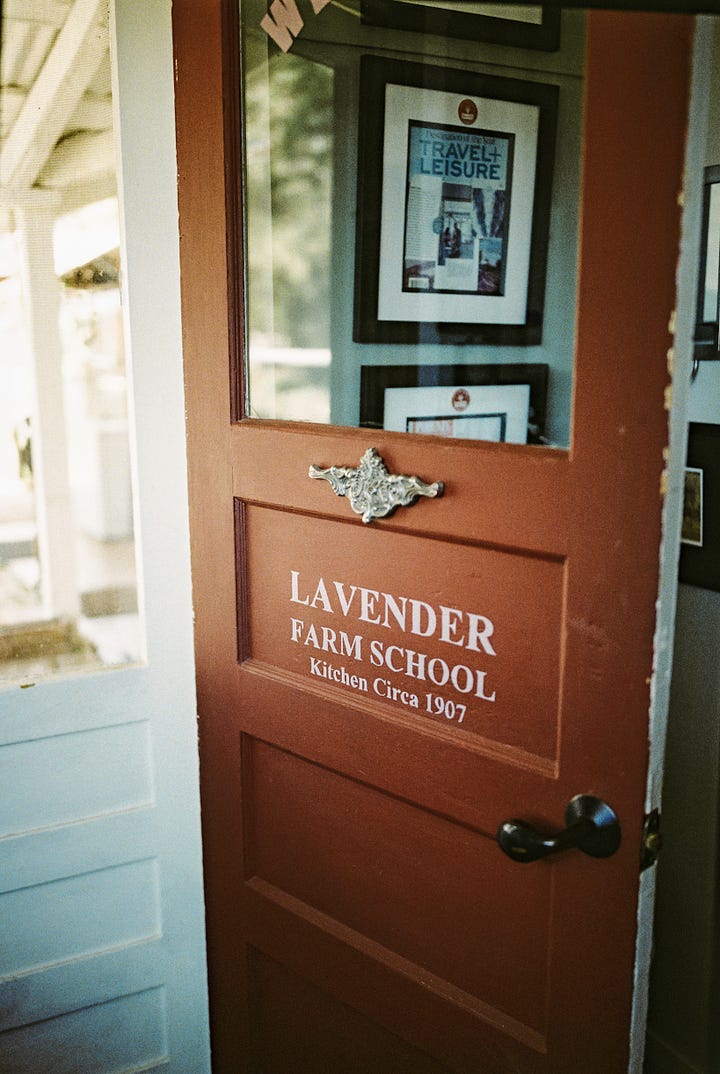
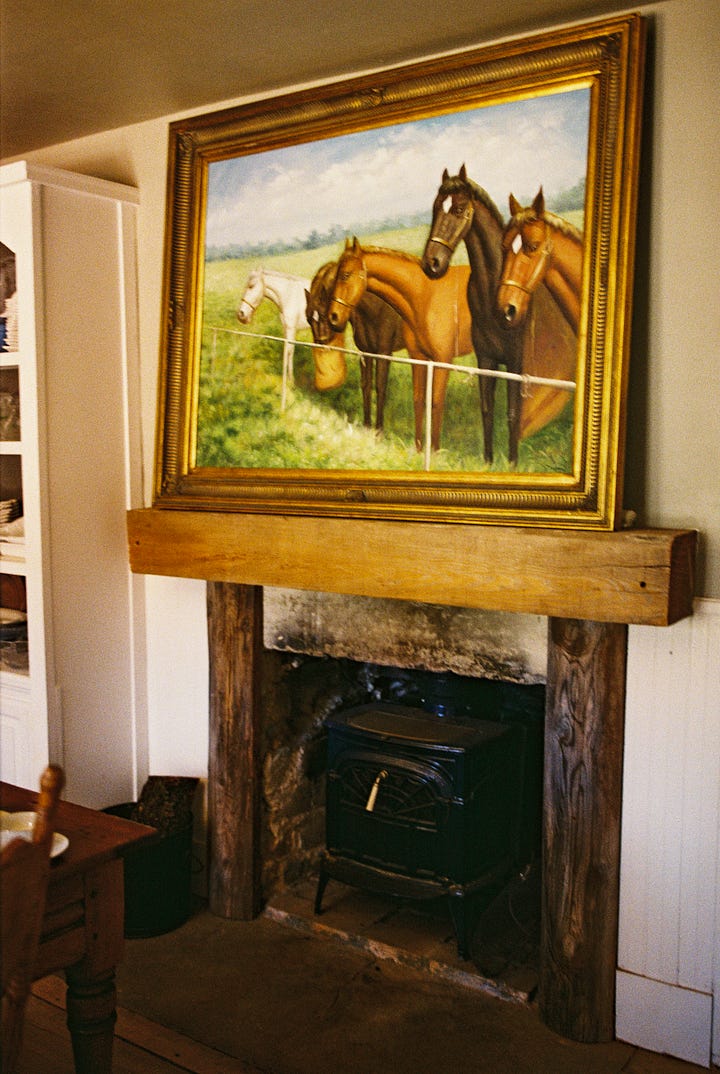
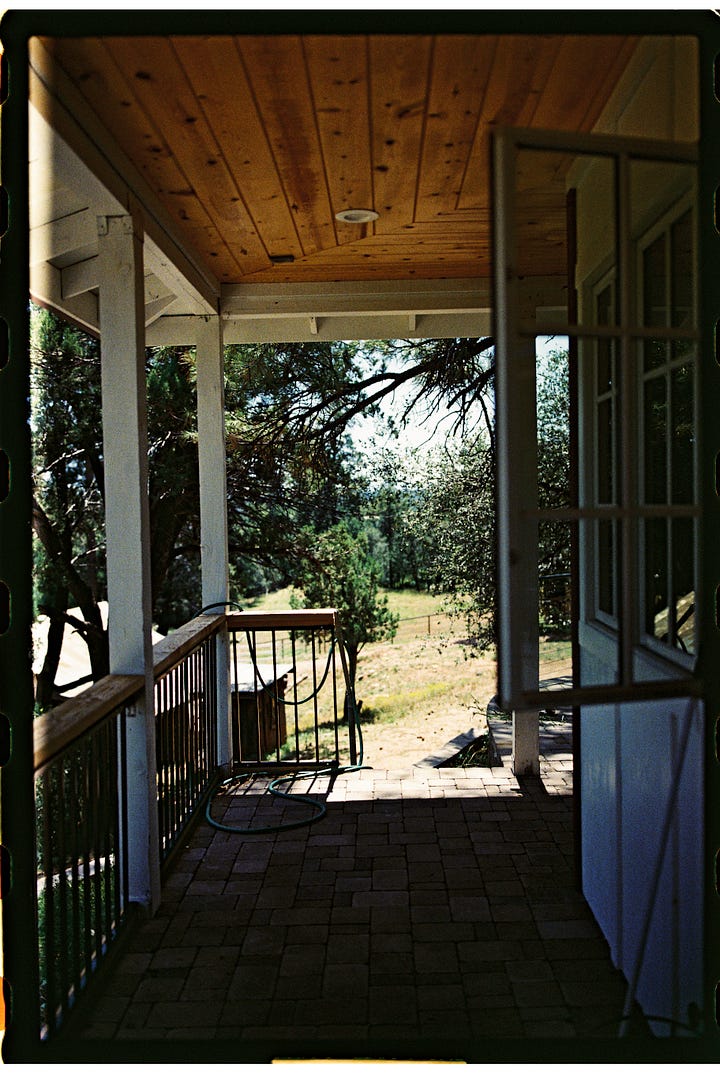
In 2015, they renovated the old farmhouse, preserving its heart while adding a new wing for modern comforts. Each room and corner offers sweeter details than the last.
The central kitchen of the Cook School remains nearly untouched, with a striped linen skirt still draped beneath the sink and windows opened by vintage turn knobs. Yet they expanded other parts of the home, adding an extra living space and an expansive library filled with books, magazines, and original documents left by the Relief Society — the women's organization of The Church of Jesus Christ of Latter-day Saints.
Built in 1890 for the Hunt family, the aged log cabin now houses Terry and Rick's lavender drying operation. Hundreds of lavender varietals hang upside down from the ceiling beams, filling the space with the fragrance of Royal Velvet and Provence. The weathered wood exudes the scent of years past, tinged with a musty edge from recent rain. Its sturdy board-and-batten has withstood a lifetime and seems poised to endure another. Step outside, and the view unfolds: guests and the entrance road below, the farm's crops stretching across the hillside.
And, finally, the original primary bedroom, so snug that the walls brush against the quilted queen bed, once housed seven Hunt children. This was back when farm life filled most of the daylight hours, and the bed was simply a place to lay one's head at the end of a long day.
Why Lavender?
Lavender is an excellent, easy-to-cultivate crop that protects the harvest by repelling the forest's natural intruders — elk. Its pungent scent and tart flavor are unappealing to these furry neighbors. Moreover, lavender is a beautiful and versatile plant with many uses, making it a popular commodity that's easy to market to diverse consumers.
Among the 5,000 plants gracing the property, varieties include Royal Velvet and Provence — both prized for culinary use — and Grosso, celebrated for its stunning appearance and rich aroma. Grosso is ideal for crafting essential oils, cocktail salts, soaps, butter, and pepper blends. The list of possibilities goes on — seriously, check out their shop; it's fantastic.
The farm is in an almost perfect climate zone for cultivating these blossoms. Most lavender species are hardy in USDA Zones 5 to 9; the high elevation and dry air enhance the concentration of essential oils within the plants, amplifying their healing properties and rich aromas.
Rows of lavender flourish specifically within Pine Creek because they're nourished by nearby pristine, spring-fed waters diverted directly to the plants. This pure source provides unparalleled nutrition and hydration, resulting in quality lavender season after season.

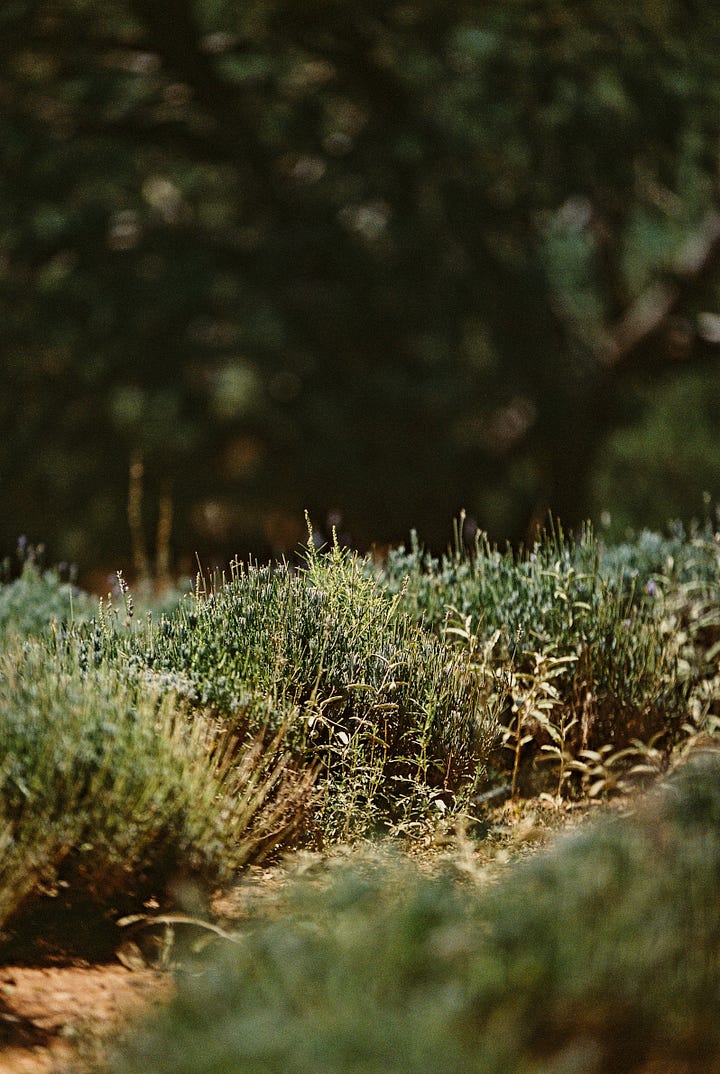

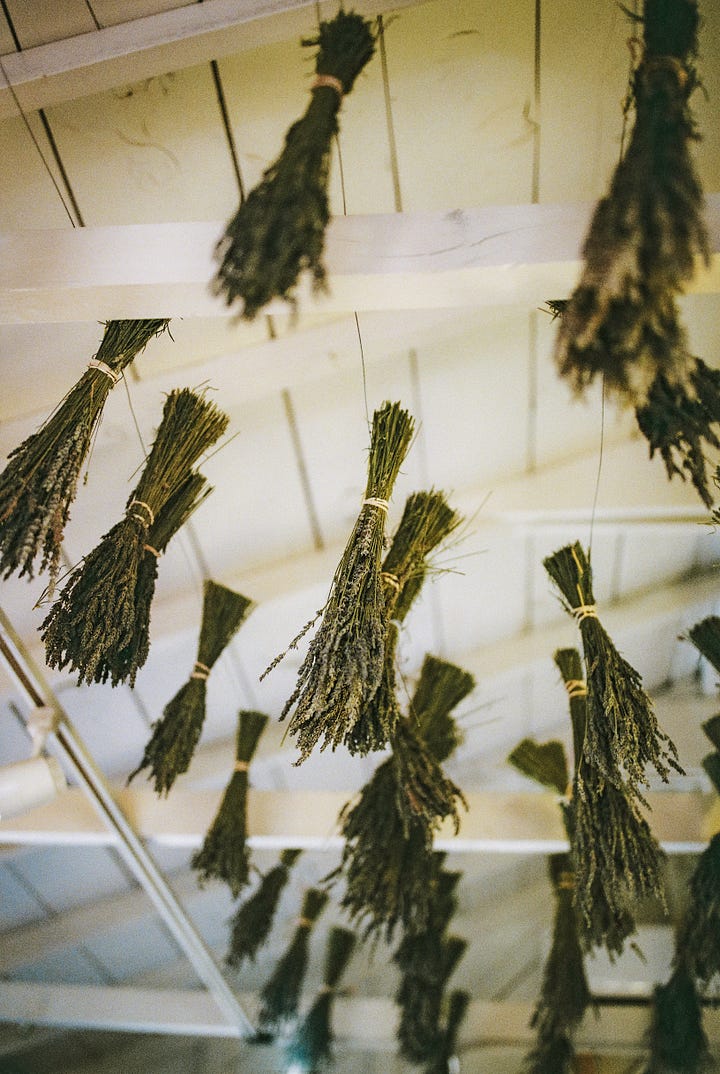
One of the property's most charming aspects is Terry's affection for her pups, who roam freely and nibble on pine twigs like toys. They warmly greet guests at the shop, politely wagging for a pet before trotting off to find more sticks. These dogs are never short on head pats, treats, and ample space to explore.
A black and brown newcomer — still awaiting a name — arrived just the day before our visit, yet his comfort among the crops and with the resident dog, Pipercub, made him feel right at home.


